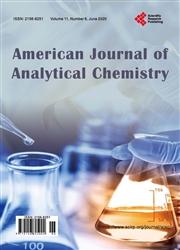Ultra-Sensitive LC-MS/MS Method for the Trace Level Quantification of Six Potential Genotoxic Nitrosamine Impurities in Telmisartan
引用次数: 10
Abstract
Nitrosamine impurities are potentially genotoxic which are considered under cohort of concern as per ICH M7 guidelines and need to be controlled at trace levels during quantification in drug substances and drug products for safe human consumption. Recent regulatory requirements also suggest the need to have highly sensitive analytical methods for the accurate quantification of Nitrosamine impurities. In this paper we have presented simple, rapid and ultra-sensitive LC-MS/MS method for six potential genotoxic nitrosamine impurities: N-Nitroso dimethyl amine (NDMA), N-Nitroso diethyl amine (NDEA), N-Nitroso Ethyl Iso propylamine (NEIPA), N-Nitroso-N-methyl-4-aminobutyric acid (NMBA) N-Nitroso diisopropylamino (NDIPA) and N-Nitroso dibutyl amine (NDBA) with a LOQ of 0.004 ppm. Chromatographic separation is achieved using Zorbax SB C18 150 × 3.0 mm, 3.5 μ column with 0.1% formic acid in water as mobile phase A and 0.1% formic acid in methanol as mobile phase B at a flow rate of 0.3 ml/min using gradient mode of elution at a total run time of 18 minutes. Six nitrosamine impurities are successfully ionized and quantified in positive mode of atmospheric pressure chemical ionization (APCI) using multiple reaction monitoring (MRM). Method validation is performed as per ICH guidelines evaluating the limit of quantification and detection and found to give good S/N ratios with good linearity range of 0.002 - 2 ppm with regression coefficient >0.99 for all the six nitrosamine impurities. Method recoveries are established using three-step sample preparation protocol and are found to be satisfactory within 80% - 120%. The method can be used routinely applied for the detection of Nitrosamines in Telmisartan at a concentration of 1.5 ng/ml (0.03 ppm with respect to telmisartan concentration of 50 mg/ml).超灵敏LC-MS/MS法定量替米沙坦中6种潜在遗传毒性亚硝胺类杂质
亚硝胺杂质具有潜在的遗传毒性,根据ICH M7指南被视为关注队列,在原料药和药品的定量过程中需要控制在痕量水平,以供人类安全食用。最近的法规要求也表明需要高度敏感的分析方法来准确定量亚硝胺杂质。本文建立了n -亚硝基二甲基胺(NDMA)、n -亚硝基二乙基胺(NDEA)、n -亚硝基乙基异丙胺(NEIPA)、n -亚硝基- n -甲基-4-氨基丁酸(NMBA)、n -亚硝基二异丙胺(NDIPA)和n -亚硝基二丁基胺(NDBA) 6种潜在遗传毒性亚硝胺杂质的简单、快速、超灵敏的LC-MS/MS检测方法,LOQ为0.004 ppm。色谱分离采用Zorbax SB C18 150 × 3.0 mm, 3.5 μ柱,流动相A为0.1%甲酸水溶液,流动相B为0.1%甲酸甲醇,流速为0.3 ml/min,梯度洗脱,总运行时间为18 min。采用多反应监测(MRM)技术,在常压化学电离(APCI)正态模式下成功电离并定量了6种亚硝胺类杂质。根据ICH指南评估定量和检测限进行方法验证,发现对所有六种亚硝胺杂质具有良好的信噪比,线性范围为0.002 - 2 ppm,回归系数为>0.99。方法采用三步制样方案,回收率在80% ~ 120%范围内。该方法可用于替米沙坦浓度为1.5 ng/ml(相对于替米沙坦浓度为50 mg/ml为0.03 ppm)时亚硝胺类药物的常规检测。
本文章由计算机程序翻译,如有差异,请以英文原文为准。
求助全文
约1分钟内获得全文
求助全文

 求助内容:
求助内容: 应助结果提醒方式:
应助结果提醒方式:


